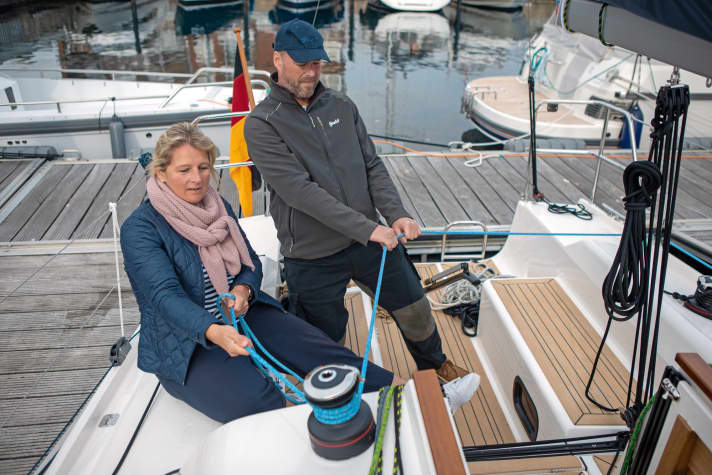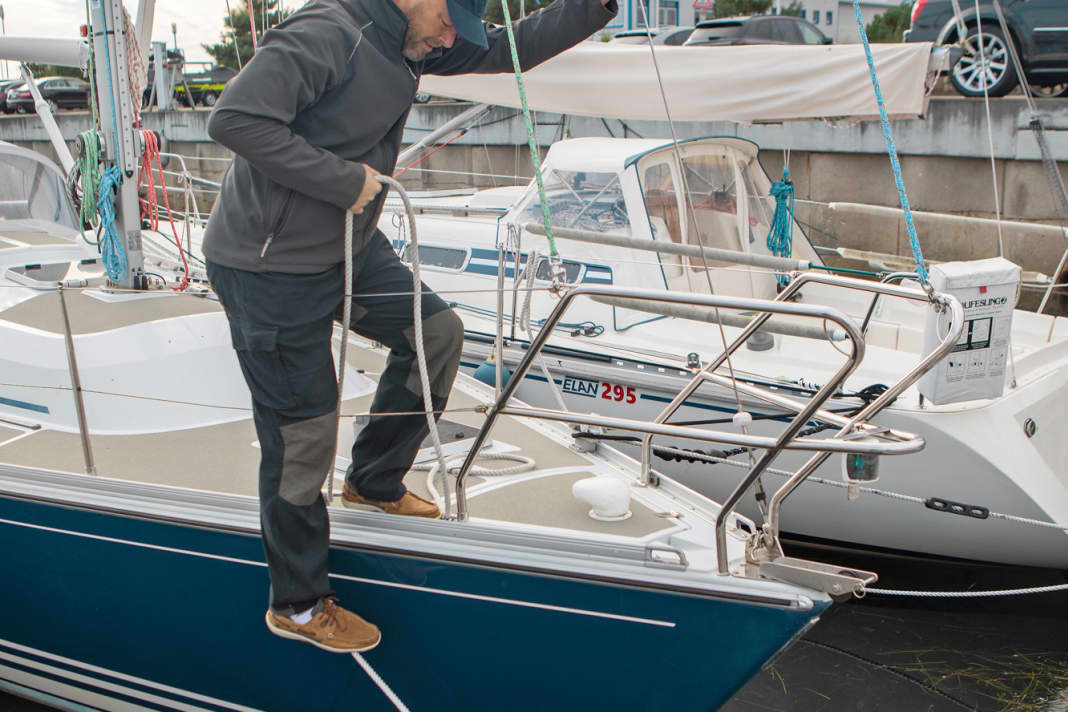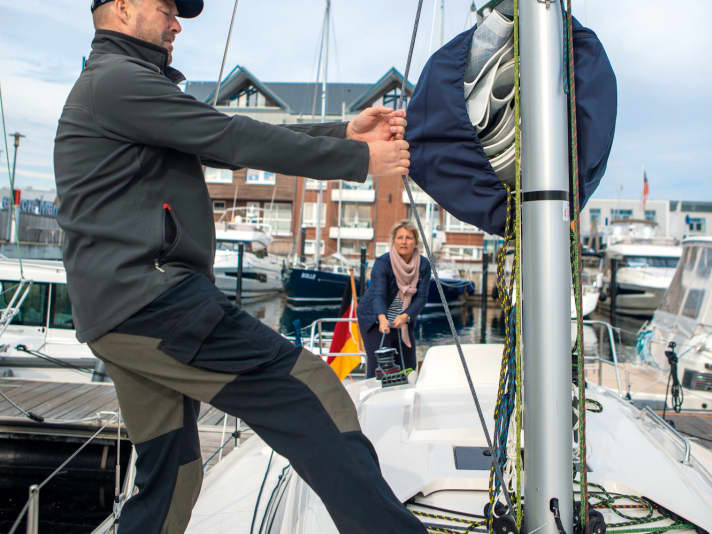
Working on halyards or outhauls, mooring lines or sheets can be very exhausting. Anyone who has ever had to drive the spinnaker in strong winds or winch someone into the mast knows a thing or two about it. If the pull becomes too great, the winch has to be used. But even cranking the winch is usually exhausting, and the halyard or sheet can only be retrieved slowly.
It doesn't even have to be foreseeable activities that push crew members to the limits of their strength. If, for example, the bow of the yacht is too far away from the jetty due to a fluctuation in the water level, especially in an offshore wind, it can be a Herculean task to bring it back closer to the jetty by pulling on the mooring lines.
In order to be able to apply significantly more tension to lines for such or similar tasks than would be possible with normal pulling, the so-called collapsing into lines is a suitable method. This involves applying a force to the line at right angles to the direction of pull. This lengthens the path of the line or halyard, so the line has to be longer for the same imaginary distance. As one part is always tightened, the additional line can only come from the loose part.
A second person is often needed to get through the gained line path as quickly as possible. Examples:
Hauling the spinnaker or gennaker sheet
Here is a good method for hauling through the spinnaker or gennaker sheet when there is a lot of pull: one person jerks the sheet hard and lets it go again quickly. At this moment, a second person pulls the slack through on the winch. In this way, the sheet is pulled through much faster than with a winch. However, this works better with smaller sports boats; depending on the size of the gennaker or spinnaker and the wind force, at some point the muscle power is no longer sufficient to get the sheet out of its pulling direction.

Getting closer to the jetty
If you are alone on board, this allows you to bring the yacht closer to the jetty: The loose part is driven over the cleat and pulled through quickly after each step. However, this is not entirely safe as there is a risk of falling. It would be better to have a second person on board to haul through the mooring line.
The method shown above can also be used without operating the line, but the mooring line should already have enough tension so that it does not give way immediately when loaded. Otherwise, the person stepping on it will immediately sag and may lose their grip.



Preheat traps
When setting the sail, the respective halyard can usually be pulled by hand for a certain distance. However, depending on the size and weight of the sail and also due to the friction of the mast sliders, this often comes to an end at some point. A winch can then be used to help. Nobody has to leave the cockpit to do this. However, if you want it quicker, you can prehoist the sail on the mast.
To do this, a crew member falls into the halyard. The halyard stopper must be closed, otherwise the person on the mast may march backwards overboard. After falling in, when a good distance has been taken, the person on the mast releases the halyard with a jerk. At this moment, the second person on the halyard stopper must also jerk the halyard. If both are well-rehearsed, even larger sails can be set quickly in this way.
This method is also very suitable for pulling a person into the mast. As soon as this person sits in the bosun's chair, two other people can try out whether they have enough strength to fall in. If this is the case, the person who is being hoisted can be pulled up to the top of the mast, as their weight remains the same. Here too, it is essential to work with the halyard stopper closed.

